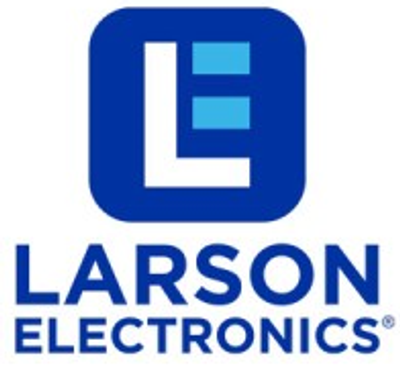

- Home
- Companies
- Larson Electronics LLC
- Articles
- What does it take to run large wattage ...
What does it take to run large wattage lights on solar?
What Does It Take to Run Large Wattage Lights on Solar?
Sometimes, people have unrealistic expectations when it comes to capabilities of solar panel systems. The reality is, if you want to run large, industrial lights using natural sunlight, you need massive panels and batteries that can support such equipment.
For example, a 60-watt solar kit can be used to run low-watt LEDs, 12-volt appliances and charge small gadgets. But for 250-watt luminaries and 300-watt televisions, one would need a much bigger renewable energy system that can handle large power requirements. This type of robust solar energy module is applicable in sustaining remote business operations, such as construction projects and military bases, as well as off-grid communities.
This article provides information about the components required to support large solar panels when powering large-wattage fixtures for commercial use.
Solar Panels and Batteries
Assuming you already know how much watts-per-hour the fixtures consume and the number of hours per day you intend to run the lights, which equates to a watts-per-day estimation, the next step would be to meet those requirements. In a scenario wherein you need 15,000 watts (15 kW) every day and assuming you’re completely off the grid and need to replenish your batteries daily, you would need to add a total of 15 kW (minimum) of power to your battery bank on a 24-hour cycle to maintain consistent power.
Perhaps the biggest hurdle is harvesting sunlight within a limited timeframe during optimal outdoor conditions. Assuming you only have four hours per day of usable sunlight (it is recommended not to be optimistic when calculating solar energy performance and usage), one only has four hours to collect 15 kW, which equates to 3,750 watts of power per hour. Now you need a large array of solar panels that can generate this amount of power consistently.
The next step is setting up a series of batteries to support your power consumption. To compute for your requirements in amp-hours, take the total daily watt-hour estimate and divide it by the battery’s voltage. Taking the above figure as an example: 15,000 watts / 12 volts = 1,250 amp hours. Afterwards, you need to compute for the number of batteries required to support the machine by dividing the total amp hours by the amp-hour rating of the battery. Again, using the figure above: 1,250 / 300 (assuming each battery supports 300 Ah) = 4.16 or 5, since it is not possible to purchase part of a battery.
When making calculations for your solar panel system, it is vital to always round up to the nearest whole number when encountering non-whole number figures. Furthermore, one should also take solar panel and battery efficiency rates into consideration during computation.
Dealing with Space Requirements
Setting up solar panels with large surface areas requires space. For large solar panel installations, such as 15 265-watt solar panels, individuals may need to consider the location of the units. Rooftops are ideal locations for solar panels. They are elevated, away from minor obstructions, such as trees, bushes and other equipment, which can help promote the harvesting of sunlight during daytime conditions. However, this may not be an option for small buildings and remote bases that use tents.
As a solution, groups may also mount the solar panels on sturdy poles next to the building or work site. This option is ideal for hilly locations, where installing large solar panels on higher surfaces will expose the units to more sunlight. It is important to consider that because the panels are supported by poles, such setups are not recommended for areas that are prone to bad weather, such as strong winds and tropical storms. To ease risks associated with pole-mount configurations, one should make sure that the supporting components come with various weatherproof ratings and corrosion-resistant finishes.
Maintenance for Large Solar Panels
Maintenance for large solar panel systems mostly involve electrical components. Once installed, the sunlight-harvesting parts rarely need cleaning (if installed at an angle of 15 degrees or more, in order to prevent the accumulation of dirt, dust, snow and other small particles). Individuals only need to run a soft brush or cloth over the surface of the panels when there is a noticeable dip in production. A decline of five to 20 percent is projected when dirt builds up on the solar panels.
It is not advisable to use rough, abrasive objects, such as wire brushes and invasive cleaning agents on solar panels. This may scratch the surface and contribute to a decrease in efficiency due to the creation of shadows. Individuals should also clean the solar panels during periods of low sunlight exposure, such as after sunset, before sunrise or during overcast conditions. Cleaning the surface when the sun is beating down on the panels may cause water or cleaning solutions to evaporate quickly, which may smear dirt on the surface. For oily accumulations from nearby equipment or operations, it is possible to use isopropyl alcohol to clean the affected area.
To summarize, factors that determine how often operators should clean their solar panels include the following:
- Location
- Tilt angle of the solar panels during installation
- Type of outdoor conditions during operation
- Electric rate/dependency (applicable to high energy consumption rates)
- Cost to clean the panels (cleaning tools, watery solutions and labor costs [if any])
Other than cleaning dirty surfaces, solar panels (since they have no moving parts) do not need to be closely inspected every week. Other components, such as the inverter and controller, are typically stored in an enclosed box, and may require maintenance or replacement if they break down.
